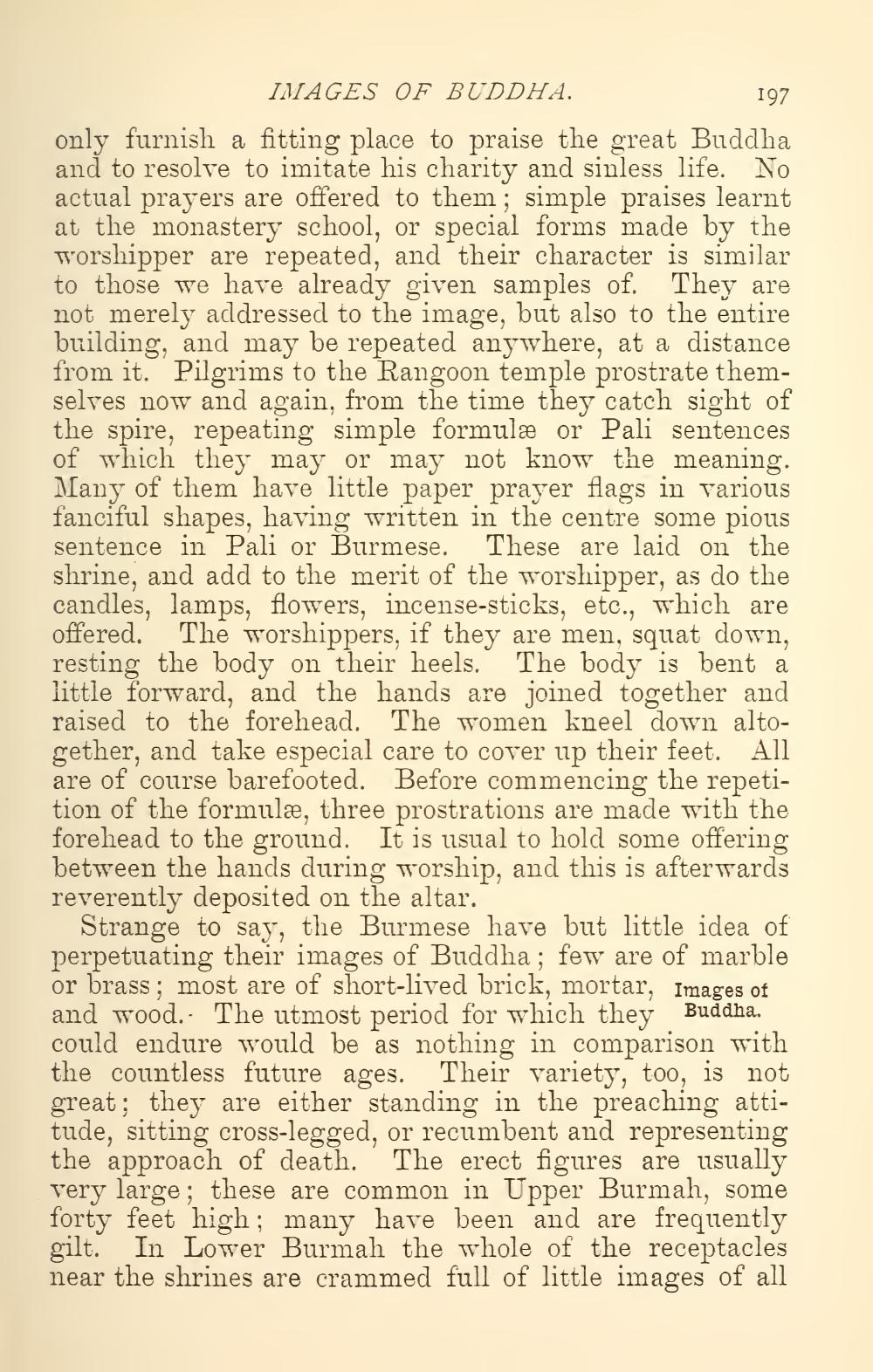________________
IMAGES OF BUDDHA.
197 only furnish a fitting place to praise the great Buddha and to resolve to imitate his charity and sinless life. No actual prayers are offered to them; simple praises learnt at the monastery school, or special forms made by the worshipper are repeated, and their character is similar to those we have already given samples of. They are not merely addressed to the image, but also to the entire building, and may be repeated anywhere, at a distance from it. Pilgrims to the Rangoon temple prostrate themselves now and again, from the time they catch sight of the spire, repeating simple formulæ or Pali sentences of which they may or may not know the meaning. Many of them have little paper prayer flags in various fanciful shapes, having written in the centre some pious sentence in Pali or Burmese. These are laid on the shrine, and add to the merit of the worshipper, as do the candles, lamps, flowers, incense-sticks, etc., which are offered. The worshippers, if they are men, squat down, resting the body on their heels. The body is bent a little forward, and the hands are joined together and raised to the forehead. The women kneel down altogether, and take especial care to cover up their feet. All are of course barefooted. Before commencing the repetition of the formulæ, three prostrations are made with the forehead to the ground. It is usual to hold some offering between the hands during worship, and this is afterwards reverently deposited on the altar.
Strange to say, the Burmese have but little idea of perpetuating their images of Buddha ; few are of marble or brass ; most are of short-lived brick, mortar, Images of and wood. The utmost period for which they Buddha. could endure would be as nothing in comparison with the countless future ages. Their variety, too, is not great; they are either standing in the preaching attitude, sitting cross-legged, or recumbent and representing the approach of death. The erect figures are usually very large; these are common in Upper Burmah, some forty feet high; many have been and are frequently gilt. In Lower Burmah the whole of the receptacles near the shrines are crammed full of little images of all




